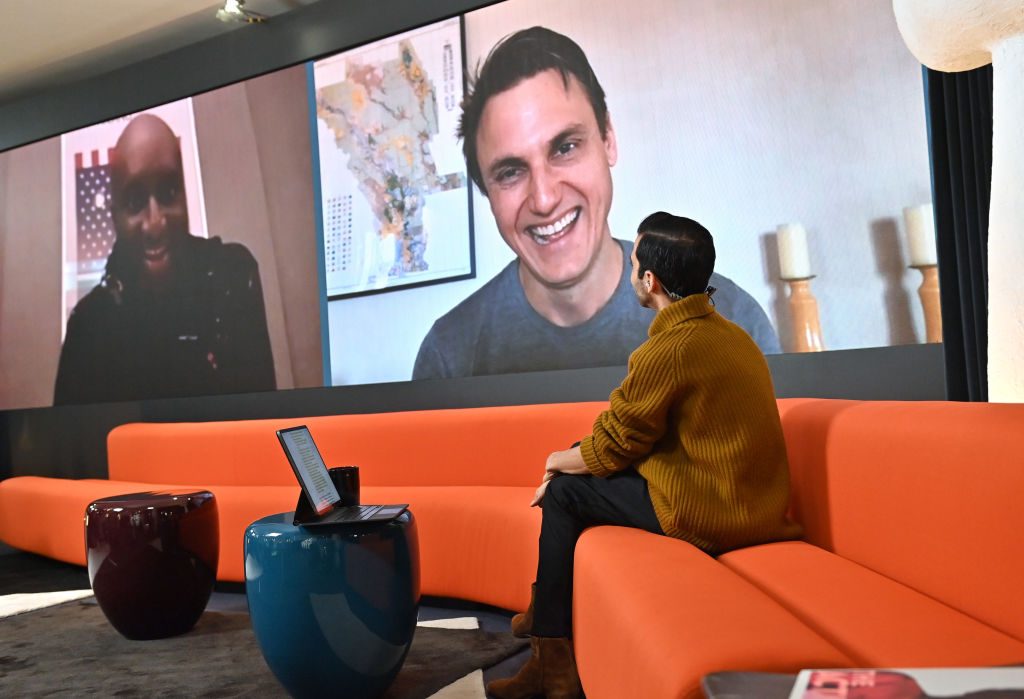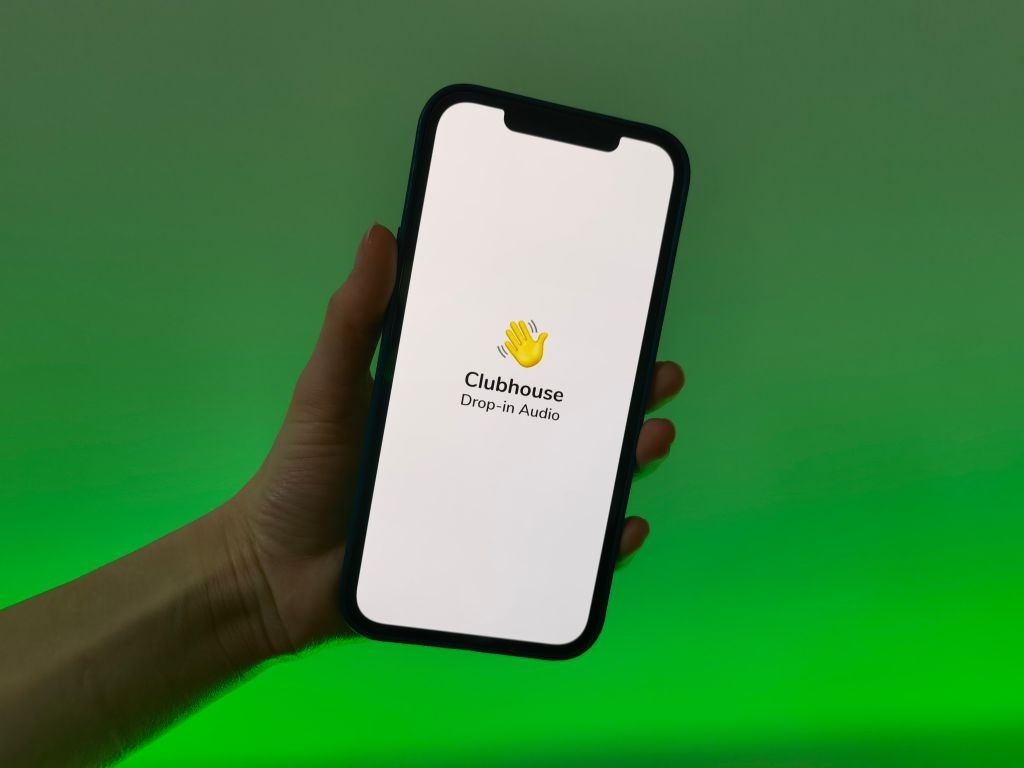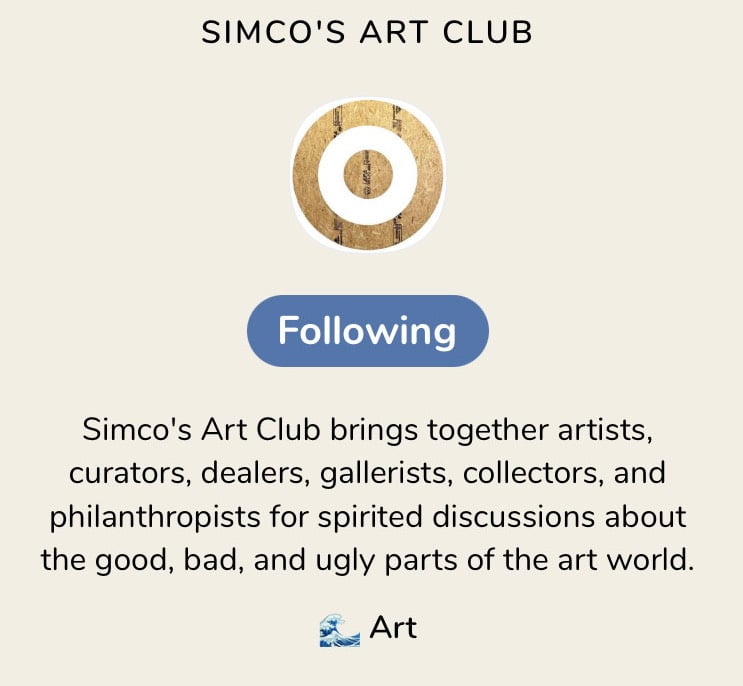Art World
‘I Miss Gossiping!’: How the Invite-Only Social-Media App Clubhouse Is Making the Art World Fun Again (Even Without the Parties)
We took a tour through the buzzy new audio-only platform Clubhouse, which has taken the art world by storm.

We took a tour through the buzzy new audio-only platform Clubhouse, which has taken the art world by storm.

Kate Brown

I received a text-invite to download an app a week ago from a former gallerist friend. Suffice it to say, I felt underwhelmed by the idea of downloading yet another program onto my phone, but was intrigued enough by her recommendation that I signed up for Clubhouse, an exclusive audio-only app.
The rest of my work day went on as usual and then, suddenly, at night, my notifications started to light up. Something was happening—the art world was meeting up.
Somewhere between Twitter, LinkedIn, and an ad-hoc podcast, Clubhouse, which launched last April, has been snowballing in popularity in recent months, helped in no small part by the lockdown measures of the past year. People are stuck at home and seeking ways to connect. After a new slew of art-fair postponements last month, and as it becomes increasingly likely that business as usual is still far off in some hazy, post-vaccine future, Clubhouse is here, giving us some of the networked, buzzy energy we’ve been missing.
A buttoned-down but professional communication platform, its various rooms pop up to offer a kind of social hour where one can chat about the art business and, while not necessarily seal a deal, still walk away with a fistful of business cards.
As one publicist and Clubhouse user I know texted me last week: “It came out of the blue and it’s the talk of the town.”

Virgil Abloh (left), creative director of Off-White and Louis Vuitton Menswear speaks with Paul Davison (top right), co-founder and CEO of Clubhouse, and Business of Fashion CEO Imran Amed. Photo: Samir Hussein/Getty Images for The Business of Fashion.
The key difference between Clubhouse and other social media apps is its combination of ephemerality (everything is available only as it is happening, and nothing is recorded) with the intimacy of an audio-only medium.
And, because there is no video, you also don’t have to fuss with your background or your hair— cutting out, incidentally, indicators of wealth and status unfortunately present on group video calls. You can also multitask since Clubhouse works, like a podcast, on the background of your phone. Users can quietly enter and exit rooms at any time, and either stay on the periphery and listen or raise their hand, enter into a circle, and un-mute themselves. There are no videos, no likes, and no text-based comments.
“I miss gossiping!” said one guest in a German-language conversation last week about selling digital art online. It was quenching to hear people speak candidly again and off-the-cuff.
There is also a thin veil of exclusivity, as one must be invited, with a guest. (In Clubhouse, it’s actually a plus-two.) According to media reports, Clubhouse will someday soon do away with this VIP feature, but for now, the app sells itself with this sense of selectivity (which the art world tends to love).
Mirjam Baitsch, head of marketing and development at Kunstmuseum Basel, is a dedicated fan. She told Artnet News that she is looking into setting up an account for the museum, which has been soul searching during these past months under lock and key.
“Museum professionals and others are all on there, but so is our audience—it breaks down hierarchies that you would normally have between them,” she says. “It is a real chance for the art world to have a dialogue with others.”

A user of the social media app Clubhouse shows her smartphone with the logo of the audio application. Photo: Christoph Dernbach/dpa via Getty Images.
Founded in April 2020 by Alpha Exploration Co., the once-fledgling app for tech-loving, avant-garde types is looking increasingly like a force to be reckoned with. Users have swelled to two million, doubling in the beginning of 2021 alone. The venture capital firm Andreessen Horowitz bought a stake in the company not long after it launched and, by the end of December, announced that Clubhouse had raised $100 million. On January 21, its investors said Clubhouse was valued at $1 billion—perhaps making it the first tech unicorn of 2021.
But that trajectory has not been without controversy. The app, which operates with a kind of what-happens-in-Clubhouse-stays-in-Clubhouse vibe, has come under fire for lacking content guidelines, and has raised alarm about what that might mean for hate speech on the platform. It also became popular so quickly in Europe that regulators are racing to bring it to heel with EU privacy law.
Nevertheless, Germany, in particular, seems smitten. Clubhouse became the most downloaded app in the country at the end of January, and the German art world has not been an aberration of that trend.
This week, I listened intently to the formerly jailed art dealer Helge Achenbach as he offered business advice to a room of 500 listeners. Collector Gil Bronner shared the challenges of running a private collection during lockdown. On Friday, Monopol magazine created a room with Yilmaz Dziewior, who will curate the next German pavilion in Venice, and Marion Ackermann of the Dresden State Collections.
The app also has serious traction in the US. California collector Stefan Simchowitz started his own clubhouse inside of Clubhouse called Simco’s Art Club last year, which offers earnest discussions about art, followed by questions from the audience and a speakeasy at the end. “I think it provides community, and the ability to share and converse at scale,” he says. (He’s sure it that Clubhouse will be the next social media phenomenon, he says, though he admits he only goes in on Tuesdays for his own event because he is an Android user—Clubhouse only operates on iPhone for now—so he has to borrow his partner’s device.)
Most critically, the platform is not just about powerful voices. The key to the whole operation is that it opens up the floor up for lateral conversations. In one room I visited, called “No Dumb Questions,” artists aired important grievances about the art market and asked questions of collectors. While listening, you could see the speaker’s brief biographical details and, sometimes, watch their follower list grow as they made viable points.
“It’s another medium that will continue to assist in breaking down the barriers and structures of who defines culture in the art world,” Simchowitz tells me. “[It] will help give those an opportunity to get inside the system despite the myriad attempts for art-world sanctioned gatekeepers to keep them out.”

A screenshot from Clubhouse of Simco’s Art Club.
The startup, tech, and crypto finance scenes are among the most active on the app, but that has been changing. There are increasing numbers of self-help rooms and speakers concerned with subjects ranging from holding businesses accountable for diversity to using psychedelics to heal one’s brain to the recent GameStop controversy. There are even group meditations—silent digital rooms filled with muted users.
Art dealer Johann König was bumping around on the app while I was online last week, and a small crowd in the art world seemed to follow him (you can see where people are in the app, which, trust me, is a fun detail). He was fielding questions about the art market and striking up chats with tech businesspeople here.
“I have connected with great people all through the ranks, from artists to start-up entrepreneurs,” he tells Artnet News. “I think it will become a household app.”
There seems to be an especially smooth entry for users who are keen to innovate. Clubhouse is an “exciting communication tool to reach out to a new audience as well as to meet people you haven’t seen or heard for a while,” says German art dealer Anne Schwanz. Together with her business partner Johanna Neuschäffer, she has been having numerous conversations about the art market. “As much as we miss seeing and exhibiting art, we also miss talking about it with others… Right now it is a fascinating communication tool where everybody starts at zero,” says Neuschäffer.
But is Clubhouse just a balm for these troubled times, or will it outlast lockdown? It’s hard to say. The app, and its users, will likely want to find ways to monetize themselves, and, as Baitsch from Kunstmuseum Basel points out, it will also all probably depend on its trajectory in Silicon Valley. Tech giants are known to replicate new tools on their own platforms.
Even if its success slows or crashes, there remain many lessons to learn from Clubhouse for now. Many important issues in the art industry still deserve to be aired out, and insiders might do well to rub shoulders with the tech elite while waiting for in-person meetings again.
“We can learn from them,” says Baitsch. “The tech spirit offers things we can learn from, namely: How can the art world learn to break through its own boundaries?”
Katie Rothstein contributed reporting.